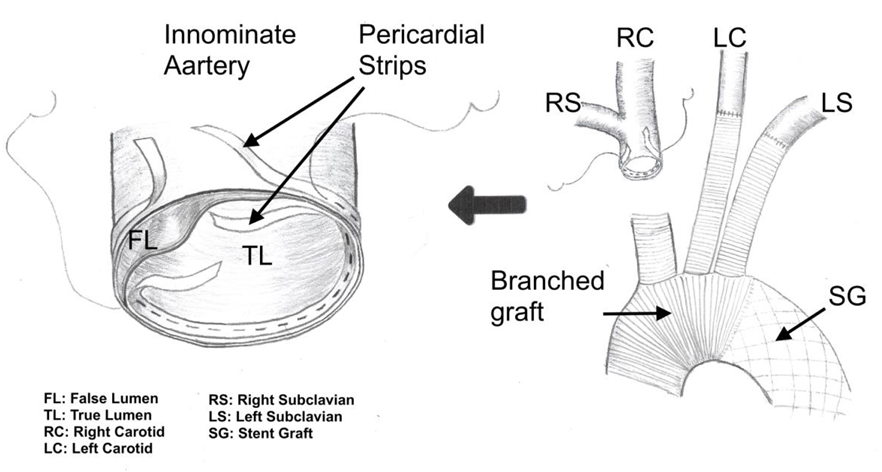Three improved and innovative technologies of the Department of Cardiovascular Surgery were presented at the Nordic SATS Annual Meeting
Endovascular repair of lesions involving the aortic arch and adjacent areas remains a technically complex procedure with numerous uncontrollable factors and uncertain long-term therapeutic outcomes. Conventional arch debranching and hybrid endovascular repair can improve long-term outcomes but often requires extracorporeal circulation. The Cardiovascular Surgery Department of The Eighth Affiliated Hospital, Sun Yat-sen University (EAH-SYSU) has developed a unique ascending aorta-to-bilateral common carotid artery bypass technique to protect the brain during surgery. Aortic arch debranching is performed off-pump, significantly reducing surgical trauma and risk, and achieving satisfactory clinical outcomes.

The incidence of type A aortic dissection involving the innominate artery is approximately 20-45%. Internationally standardized surgical treatment for innominate artery dissection remains lacking. While ascending aorta-to-right common carotid artery grafting has been reported, long-term outcomes have been suboptimal. The Cardiovascular Surgery Department utilizes a sandwich endovascular fixation technique to repair the dissected innominate artery in situ, simultaneously closing the false lumen and restoring normal anatomy and function of the innominate artery, with satisfactory clinical results.

Y-incision aortic annular enlargement technique, pioneered by an American doctor, is currently the most widely used aortic surgical technique internationally. This technique requires transection of the aortic root and is technically complex. Department of Cardiovascular Surgery has modified this technique to allow for conventional aortic incision, eliminating the need for aortic transection and simplifying the procedure, which maintains the integrity and stability of the aortic root.






